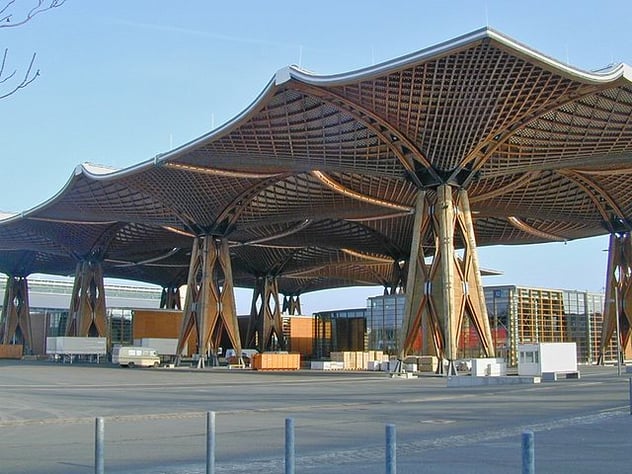
Testing and experimenting with different building materials has always been a part of human history. All materials contribute specific characteristics to structures – strength being one of the most critical. Today, most structures are composed of wood, steel, concrete, or masonry. In most cases, engineers and architects utilize these materials in their designs to balance cost, aesthetics, structural integrity, and longevity.
Each material has its own strengths and weaknesses that should be considered. But which materials build the strongest structures?
The (slightly unsatisfying) answer is: It depends.
Understanding the benefits and shortcomings of each material will allow you to weigh them against the goals you have for your project. That way, you can determine which material or combination of materials is best for your project.
Engineered Wood
Humans have utilized wood for thousands of years to create shelters and structures. Despite hundreds of years of technological progress and the development of many synthetic materials, wood is still a popular choice for building projects.
Wood’s popularity comes from its relative affordability, it is lightweight, and can be easily worked with. Wood, on the other hand, has a few disadvantages. It isn't always ideal for supporting a lot of weight, so wood isn't the best choice for tall buildings. Wood only lives “for a few hundred years” before decaying, unlike some synthetic materials, which can last thousands of years. It’s also susceptible to fire and moisture damage and can fall prey to destructive termites.
Manufacturers have created several engineered wood products to compensate for some of the wood's disadvantages. These are manufactured construction materials made by binding wood particles, fibers, ropes, or sheets to form a composite material. Some woods can even be manufactured to have moisture and fire-resistant properties.
Steel
Steel is a popular construction material since it is both strong and light. This makes it ideal for large, multi-story structures as well as manufacturing and industrial enterprises. Steel can resist moisture in contrast to wood, making it safer from termites and fire. It will also endure much longer than wood.
However, steel framing a structure will be more expensive than wooden framing. A competent structural engineer will be able to save money by using enough steel to build your building safely and support the above load while monitoring and controlling unnecessary expenses.
Today’s steel is an alloy made from iron and carbon, and it’s generally regarded as the premier building material for use in large-scale commercial construction. Steel framing is incredibly durable and robust, making it the basis for most skyscrapers as we know them. Steel components are consistent and predictable, making repeatable, precise craftsmanship easier to accomplish as a manufactured material. As a building material, it holds up well to movement and excels in the properties of toughness, durability, and ductility.
Concrete
Concrete is the product of cement, aggregate materials like sand or stone, and water. This mixture is poured into forms or molds that dry and harden, creating walls, supporting beams, sidewalks, and other structures. Concrete is both long-lasting and sturdy; as a result, it's an excellent choice for your structure's foundations. It can handle the weight of the above structure, and it can also stand up to the moist soil that surrounds it.
Concrete requires a distinct set of skills to install than wood or metal. You'll want to make sure your structure is built correctly and can withstand the test of time, so you'll want to work with a trustworthy and experienced concrete crew.
Compared to wood and metal, concrete may be more expensive to use for your structure, although its benefits can make it an attractive option. Concrete’s durability and energy efficiency may cost building owners less in the long run to operate and maintain, making that more considerable upfront cost easier to swallow.
Masonry
Masonry buildings, including the Pyramids of Giza and Greek temples, are among the oldest standing structures. Millions of years later, masonry is still a popular construction material. While concrete structures are set in place as one structure, masonry uses many smaller units mortared together to make one structure. Common masonry materials include clay bricks, concrete blocks, stone, and more.
Masonry is a well-known load-bearing material and can be bolstered with steel beams for extra support, making it capable of sustaining the weight of several stories. Masonry also offers design options in various materials, colors, sizes, and shapes that allow you to have more control over the structure's look.
Compared to the other materials in this article, masonry tends to be more expensive and time-consuming. Bricks require labor to turn raw materials into building materials that need to be shipped and installed by craftsmen. The bricks, stones, or blocks are also relatively heavy, and they require adequate time to install correctly. Because of this, specialized craftsmen are often needed to complete the project, and a good project plan is essential to keeping the project progressing.
Shield Engineering is always learning more about cutting-edge building materials. From steel to concrete and masonry, our team uses the best material(s) for the job at hand. Contact us today to learn how we can help with your next project.


